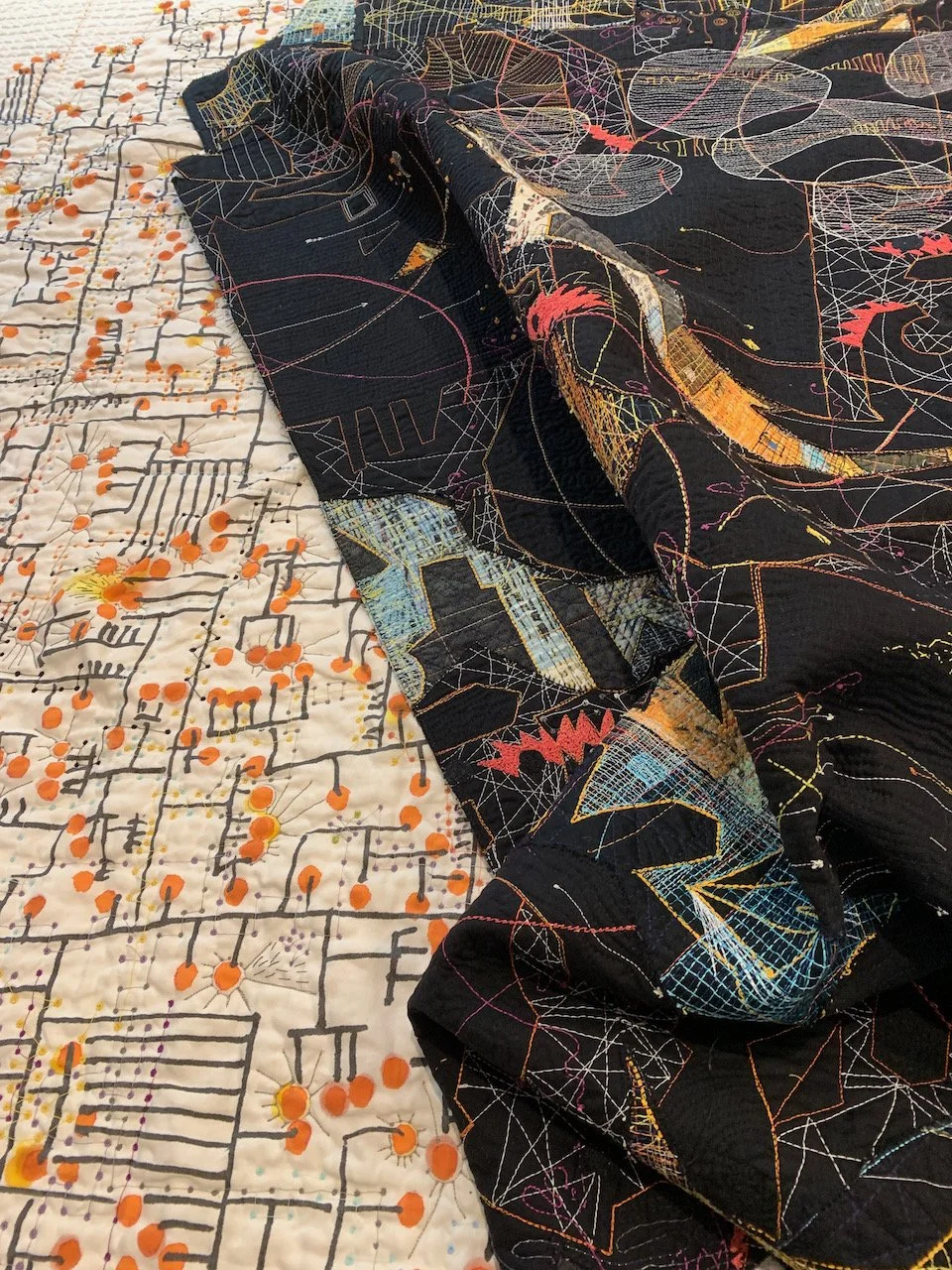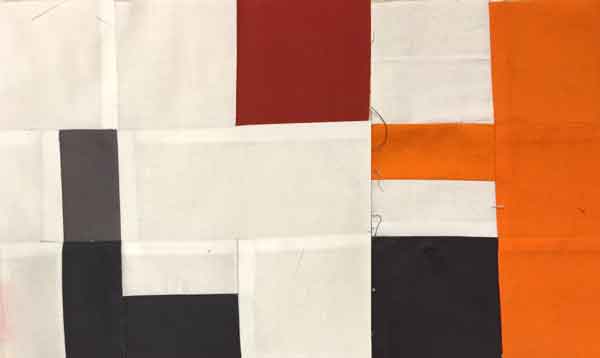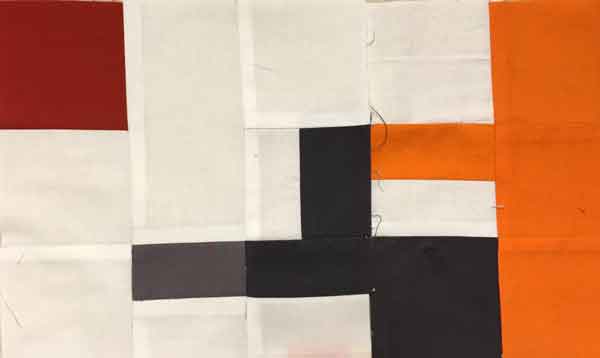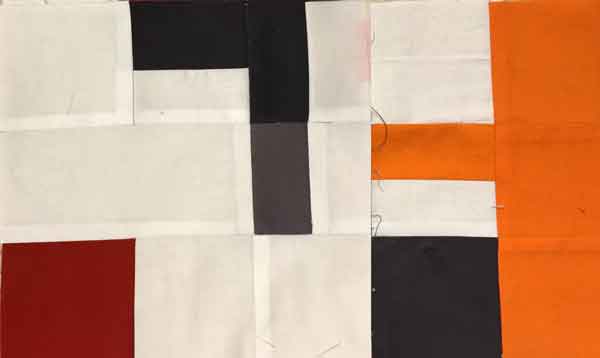How many decisions does it take?
I started a project about a month ago that included color. A great big pile of color all stitched up together. Rectangles nested, connected and spliced to create a whole. It is a process that demands patience, the power of arbitrary decision, and attention to detail. I can usually count on having two of three of those traits on any given day.
Decisions are endless, if I counted all the seams, snips and rearrangements I would have to seriously question my behavior. For example this little section took most of the morning to figure out. Which way should the red, white and gray composition attach to the orange white and gray section?
When I run out of patience I get distracted. Like: How cool are these wispy thread ends on the back of the piece? They seem to be blowing in the wind, or tangled with an inner confusion. And then I start studying the trimmings. Looking for the answer in chaos.
Stitching scraps together brings new meaning to the whole.
Leftovers reflect the effort of the choices I made.
And now I've turned the whole thing to the back so that I can study that for a while.
I started this piece with no clear goal. I vaguely wanted to create a playground for stitch. Something I could hop, skip and rollerskate over with my thread. And now I'm not so sure. I'll have to take some time to think about it some more, I'll have to find the patience to make some more decisions.


































